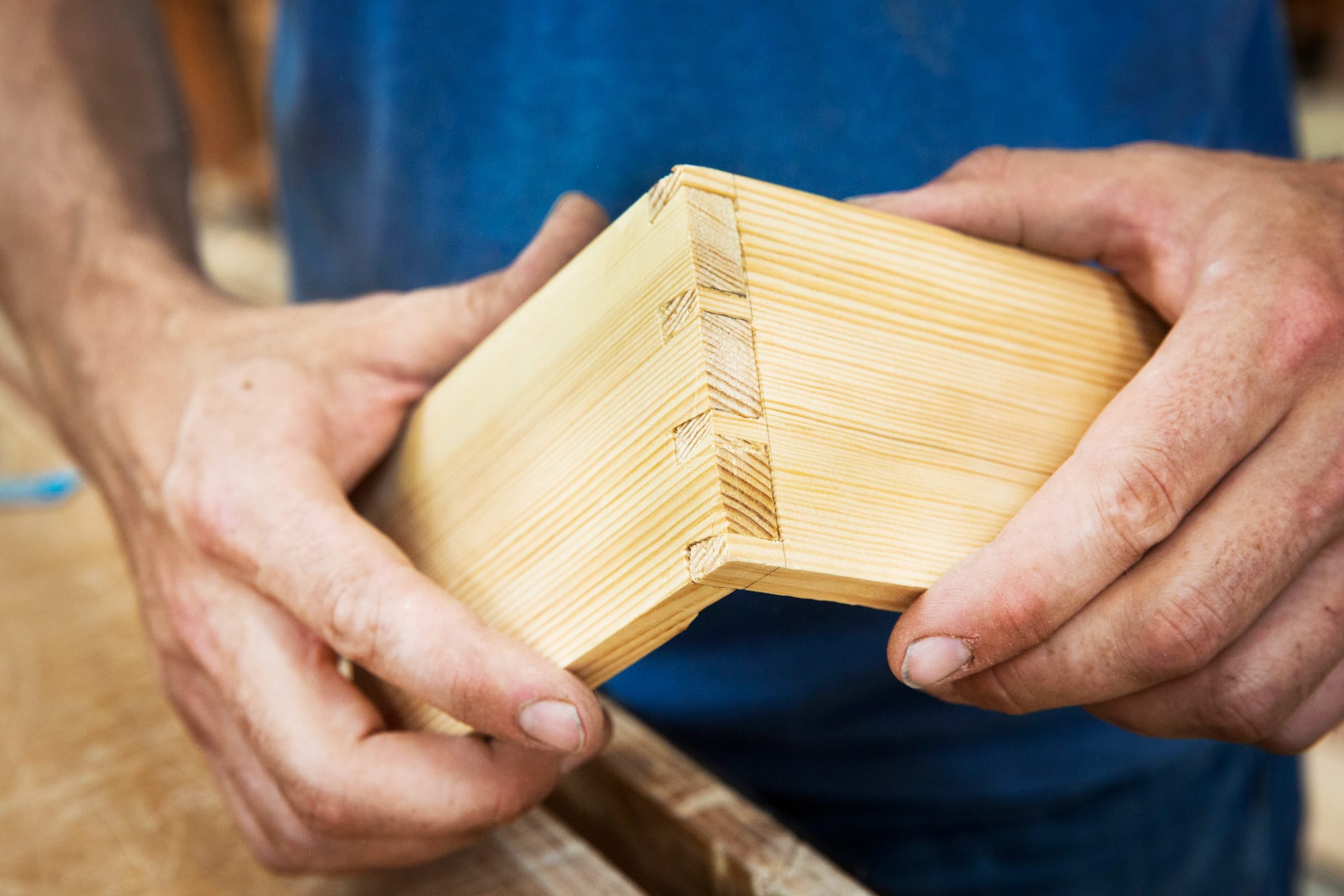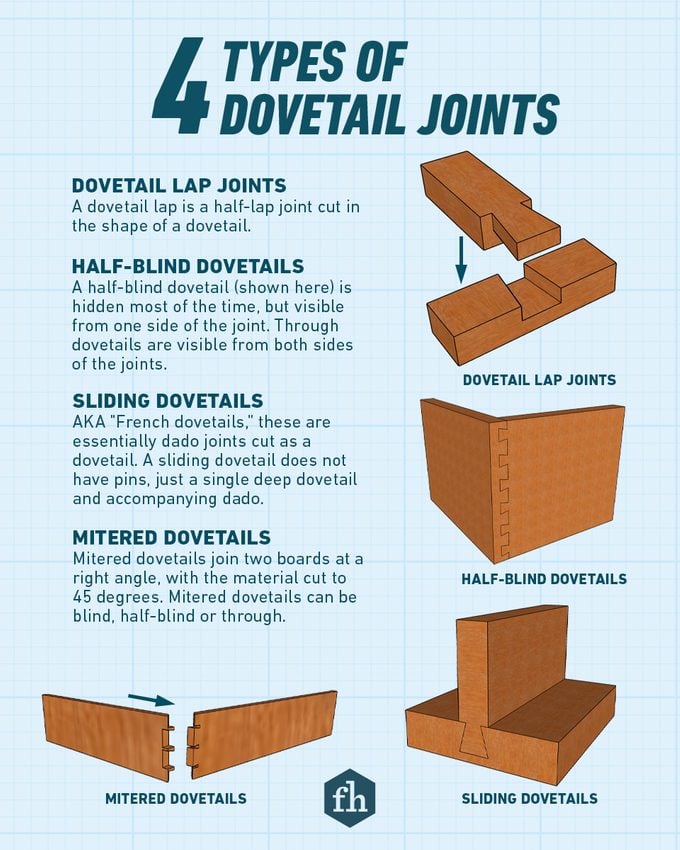Dovetail joints are beautiful, distinctive and strong. Here's a primer on how they work and how to incorporate them into your woodworking projects.

Everything You Need to Know About Dovetail Joints

Dovetail joints may be the single most beautiful type of wood joinery. Known for interlocking sections that start narrow and fan out, dovetail joints are elegant and dramatic.
Well-made dovetails can elevate a simple wooden box into a work of art, and the mysterious swell of their interlocking joints always impresses non-woodworkers. Mastering this joint will set your projects apart from the pack.
On This Page
What Is a Dovetail Joint?
A dovetail joint is a series of overlapping, flared connectors that join two pieces of wood. The connectors are called tails and pins. When viewing the face of the board, the tails resemble a dove’s tail. So do the pins when viewing the end grain.
The gaps between tails are called pin sockets, with the gaps between pins known as tail sockets. Pins and tails interlock perfectly; properly made dovetails slide together and apart in one direction. The multiple points of contact provide plenty of space for glue to adhere.
Types of Dovetail Joints
The different types and variations of dovetail joints include:
- Dovetail lap joints: A half-lap joint cut in the shape of a dovetail.
- Half-Blind dovetails: In these, the pins and tails are hidden. Half-blind dovetails are only revealed when moved, opened or seen from a certain angle, like behind a drawer face. In a through dovetail, both the dovetails and pins are visible.
- Sliding dovetails: Also known as “French dovetails,” these are essentially dado joints cut as a dovetail. Sliding dovetails do not have pins, just a single deep dovetail and accompanying dado.
- Mitered dovetails: These join two boards at a right angle, with the material cut to 45 degrees. Mitered dovetails can be blind, half-blind or through.

Common Uses for Dovetail Joints
Dovetail joints usually appear when the woodworker wants a particularly strong joint or to show off their skills.
Far and away the most common use is in cabinetry, especially in drawer construction. Many consumers look for dovetails as a visual shorthand for quality construction. Dovetails are also show up in furniture construction and sometimes in carpentry.
Dovetail Joint Advantages and Disadvantages
Like all types of joints, dovetails come with advantages and disadvantages.
Advantages
- Beautiful: It’s undeniable. Dovetails are attractive in almost any application.
- Strong: The interlocking tails and pins resist force in all directions but one. They also provide many faces for glue to adhere, strengthening the joint even more.
- Displays quality work: If you want to impress someone or charge a little more for your work, visible dovetails are a good way to do it.
Disadvantages
- Complicated: Though well within reach of most beginner or intermediate woodworkers, it’s a skill that requires practice. If the tails and pins are not cleanly cut, the joint will have gaps or pinches, resulting in a less attractive and weaker connection.
Dovetail Joint Tools
Dovetails are largely crafted with hand tools or a router. Some woodworkers make cuts with table saws, but those methods are less common.
Dovetail saws (or tenon saw)
A dovetail saw allows for straight cuts along the dovetail layout lines. Remove the bottom of the materials with a coping saw or chisel. A tenon saw, slightly larger than a dovetail saw, can also be used.
Dovetail markers
You don’t technically need dovetail markers to lay out your cuts. But the level of precision involved makes it a good idea, especially for beginners.
Coping saw
With a precise coping saw, you can remove small amounts of material.
Chisels
Cleaning up the surfaces of the dovetails with a chisel ensures a tighter fit and superior gluing surfaces.
Router
A router is a fantastic way to make dovetails, especially if you’ll be making many of them. Dovetail router bits, when combined with a dovetail jig, can make quick work of this complicated joint.



















